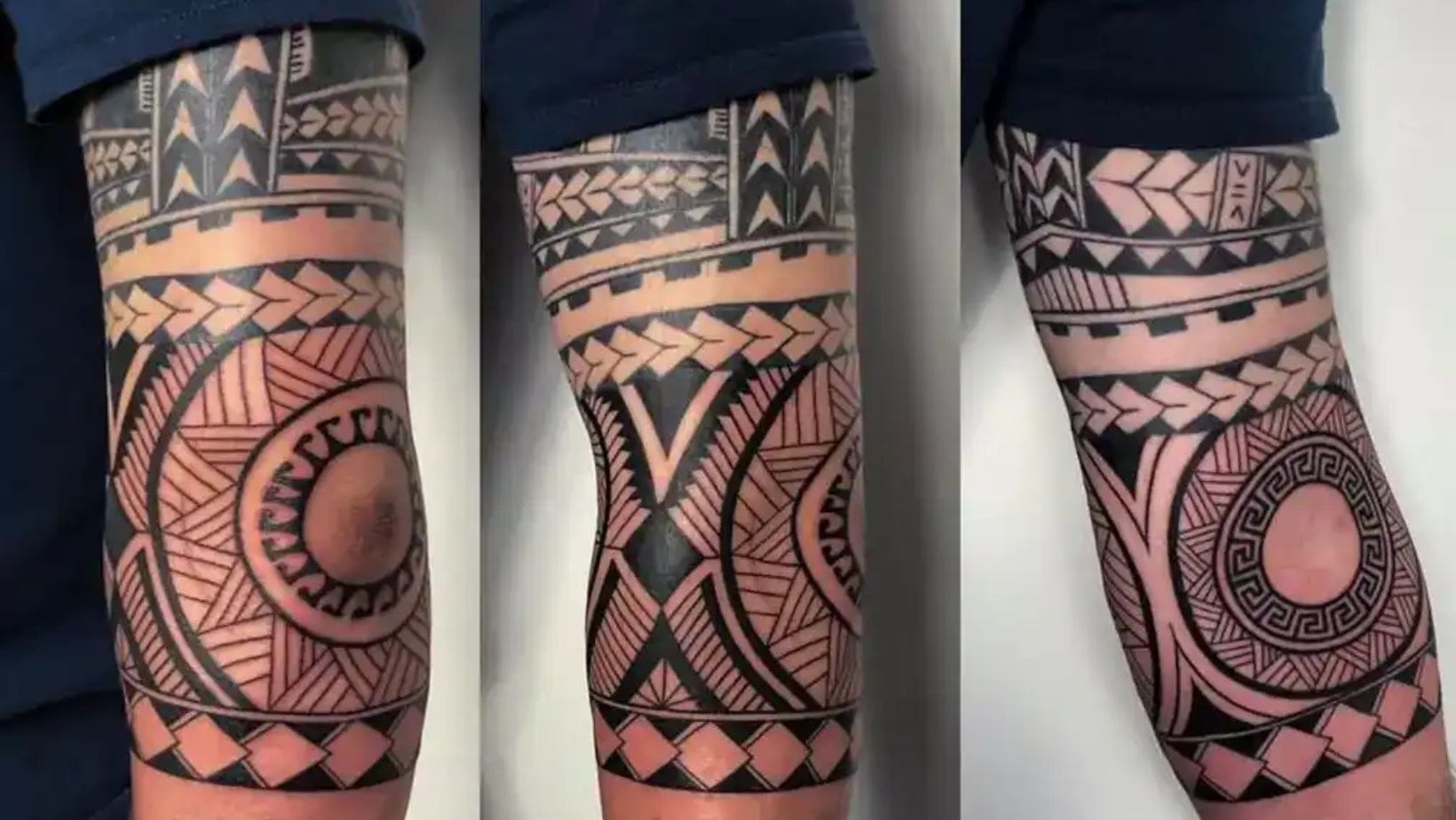Viking tattoos were more than just body art; they held deep cultural significance. For the Norse people, tattoos symbolized identity, beliefs, and status. They often depicted powerful motifs from their rich mythology, including runes and images of gods. Historical sources and archaeological finds, like preserved skin and ancient texts, provide fascinating insights into these practices. Join us as we explore the art and symbolism of Viking tattoos, uncovering what these markings reveal about Norse culture and its enduring legacy. Whether you’re a history buff or just curious, there’s much to discover!
Historical Context of Tattooing in the Viking Age

Tattooing was a notable practice among the Norse peoples during the Viking Age. Historical accounts suggest that Vikings used tattoos to express identity and status. They often adorned their skin with images of gods, animals, and symbols that held personal or communal significance. While the exact techniques remain unclear, it’s believed they used natural inks from plants and minerals.
Cultural influences from neighboring societies also shaped Viking tattooing. The Vikings interacted with various cultures, including the Celts and Slavs, who had their own tattooing traditions. These exchanges likely led to the adoption of new designs and practices. Some scholars suggest that tattoos served as markers of bravery and achievements, reinforcing the warrior ethos central to Viking culture.
Overall, Viking tattoos reflect a complex interplay of tradition, identity, and influence from surrounding communities. They provide a glimpse into the values and beliefs of a society that was both fierce and deeply connected to its roots.
Materials and Techniques Used in Viking Tattooing
Viking tattooing involved specific materials and techniques that reflected their craftsmanship. Tattoo artists likely used sharp tools made from bone, wood, or metal to create designs on the skin. The needles would have been fashioned from these materials, enabling precise application of ink.
For inks, Vikings utilized natural pigments derived from plants, minerals, and even animal products. Common sources included berries for blue and black hues, as well as charcoal and ash for darker tones. The use of these organic materials meant that colors varied based on availability and technique.
Techniques for applying tattoos likely included both hand-poked methods and possibly rudimentary stamping. Artists would press the needle into the skin, introducing ink as they worked. While the exact methods remain uncertain, it is believed that the process was both painful and time-consuming, leading to intricate and meaningful designs.
Overall, the materials and techniques used in Viking tattooing demonstrate their resourcefulness and artistry. These tattoos not only served aesthetic purposes but also carried deep cultural significance.
Common Symbols and Motifs in Viking Tattoos
Viking tattoos featured various symbols and motifs that held deep meaning in Norse culture. One of the most popular symbols was the rune, which represented letters in the ancient Norse alphabet. Runes were often used for protection, guidance, and even to invoke specific powers. Each rune carried its own unique significance, such as Tiwaz, symbolizing victory and honor in battle.
Animals also played a crucial role in Viking tattoos. Wolves represented loyalty and ferocity, reflecting the warriors’ connection to their packs. Bears symbolized strength and courage, while eagles were associated with Odin, the chief god. These animals were chosen for their attributes, which Vikings admired and aspired to embody.
Norse gods themselves were commonly depicted in tattoos. Thor, the god of thunder, was often illustrated with his hammer, Mjölnir, representing protection and power. Freya, the goddess of love and war, symbolized beauty and battle prowess. These symbols not only adorned the skin but also conveyed messages of identity, beliefs, and aspirations within Viking society.
The Role of Tattoos in Viking Identity
Tattoos played a vital role in shaping personal and tribal identity among the Vikings. Each tattoo was often a reflection of an individual’s experiences, beliefs, and connections to their community. Warriors frequently adorned their bodies with symbols that showcased their achievements and prowess in battle. This visual representation helped to create a strong sense of belonging and pride within their tribes.
Tattoos also conveyed social status in Viking society. Higher-ranking individuals, such as chieftains or notable warriors, often had more elaborate tattoos than others. These designs could signify achievements, lineage, or alliances, distinguishing them from lower-status members of society. Additionally, certain motifs could indicate a person’s role within the community, whether as a warrior, craftsman, or trader.
Through these markings, tattoos became a powerful form of self-expression and a means to communicate one’s identity. They not only highlighted personal achievements but also reinforced communal bonds. The tattoos thus served as a crucial aspect of Viking culture, blending art with identity and social dynamics.
Tattoos as Markers of Spiritual Beliefs
Tattoos in Viking culture often had deep spiritual significance. Many Norse people used tattoos to connect with their gods and express their religious beliefs. Symbols like Mjölnir, the hammer of Thor, were common, representing protection and strength. These tattoos served as personal amulets, believed to grant the wearer divine favor and guidance.
Additionally, certain motifs were linked to specific deities and myths. For example, tattoos of Valknut, a symbol associated with Odin, were thought to signify a warrior’s readiness for battle and honor in the afterlife. These symbols were not just decorative; they were imbued with the power of the stories and beliefs surrounding them.
Tattoos also played a role in rites and rituals. They could mark important life events, such as coming of age or significant achievements. In this way, tattoos were intertwined with spiritual practices, serving as a visual representation of a person’s faith and connection to Norse mythology. Overall, tattoos acted as powerful markers of spiritual beliefs, shaping how Vikings understood themselves and their place in the world.
Tattooing Among Viking Women

Viking women had their own unique tattooing practices that reflected their roles in society. Unlike men, women’s tattoos often emphasized beauty and femininity. Common motifs included flowers, animals, and symbols associated with fertility and motherhood. These designs served to celebrate their identity and life stages.
Tattooing for women was not just about aesthetics; it also held significant meaning. Tattoos could symbolize a woman’s status within her family or tribe. For example, a woman might wear tattoos to denote her marital status or the number of children she had. This practice allowed them to convey important aspects of their lives visually.
Moreover, women often used tattoos in spiritual contexts. They might tattoo symbols of goddesses or protective marks, reflecting their connection to the divine. These tattoos served as personal amulets, believed to offer strength and guidance. Overall, the tattooing practices of Viking women reveal a rich tapestry of identity, status, and spirituality within their culture.
Viking Tattoos and Warfare
In Viking culture, tattoos were often associated with warriors and their achievements in battle. Tattoos served as symbols of bravery and valor, marking a warrior’s status within their community. For many, displaying their battle scars and tattoos was a point of pride. These marks communicated not only personal strength but also the warrior’s connection to their gods and ancestors.
Tattoos could signify a warrior’s achievements, such as victories in battle or notable acts of bravery. Runes or images of weapons and animals were common choices. Each tattoo carried a story, serving as a permanent reminder of the individual’s exploits. In this way, tattoos were not just art; they were living records of a warrior’s journey.
Moreover, tattoos were believed to invoke protection and favor from the gods during combat. Many warriors felt that certain symbols could enhance their strength and courage in battle. This deep-rooted connection between tattoos and warfare underscores the significance of body art in Viking society. Through tattoos, warriors asserted their identities and solidified their legacies in history.
Modern Interpretations and Revivals of Viking Tattoos

In recent years, there has been a surge of interest in Viking-inspired tattoos. Many people are drawn to the rich symbolism and history behind Norse mythology. Designs featuring runes, gods, and mythical creatures are popular choices in modern tattoo art. This revival reflects a broader fascination with Viking culture.
However, this trend raises questions about cultural appropriation versus appreciation. Some argue that wearing symbols from a culture without understanding their significance can be disrespectful. Others believe that appreciating and honoring Viking history through tattoos can foster cultural awareness.
Tattoo artists today often strive to educate their clients about the meanings behind specific symbols. They encourage a respectful approach that acknowledges the origins of these designs. This conversation highlights the need for sensitivity in tattoo culture.
Ultimately, modern interpretations of Viking tattoos can serve as a bridge between past and present. By honoring the history while making it relevant today, enthusiasts can celebrate the enduring legacy of Viking art.
Conclusion: Viking Tattoos
Viking tattoos hold significant importance in Norse culture, symbolizing identity, spirituality, and bravery. These markings were not merely decorative; they conveyed deep personal and tribal meanings. As we explore Viking tattoo symbolism today, we gain insight into a rich history that continues to inspire modern art. Whether you’re considering a Viking tattoo or simply fascinated by their significance, these symbols can foster personal connections to a legacy that transcends time. Dive deeper into this captivating aspect of Norse heritage, and discover how these ancient designs can resonate with your own journey.
FAQs
Did all Vikings have tattoos?
Not all Vikings had tattoos. While many did, the practice varied by individual preference, social status, and cultural context. Some warriors and leaders were more likely to display tattoos as a sign of bravery or identity, while others may have chosen not to have them.
What were the most common colors used in Viking tattoos?
Vikings primarily used natural pigments for their tattoos. Common colors included black, made from soot or charcoal, and green or brown from plant materials. The limited color palette reflected the available resources and techniques of the time.
How did the Vikings care for their tattoos?
There are no specific records detailing tattoo aftercare in Viking culture. However, it is likely that they treated their tattoos similarly to wounds, keeping them clean and using natural remedies to promote healing, as was common in their time.
Are modern Viking tattoos historically accurate?
While many modern Viking tattoos draw inspiration from historical symbols and motifs, they often adapt or reinterpret these designs. Some tattoos may not be entirely historically accurate, as they blend personal meanings with ancient Norse aesthetics.
How can one research Viking tattoo designs before getting inked?
To research Viking tattoo designs, consider studying Norse mythology, symbols, and historical texts. Visiting museums, reading academic articles, or consulting with experts in Norse history can provide deeper insights. Online resources and tattoo artists specializing in historical designs can also be valuable for inspiration.

